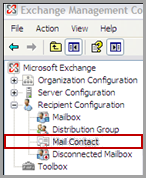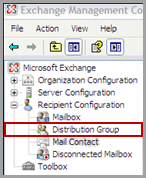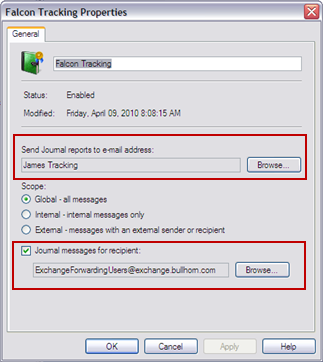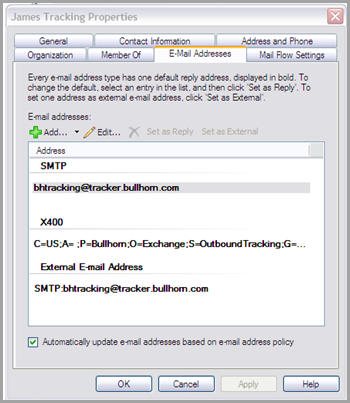| Editions Available: All Editions | Audience: |
Enabling the Bullhorn Email and Calendar Integration with Older Microsoft Exchange Environments
This article outlines using Journaling to automatically forward email from Outlook to Bullhorn and optional features to enhance email tracking.
Before You Begin
- The Bullhorn for Email gadget is only available for Exchange 2013+ and requires a server level install via the Microsoft Store. For instructions on enabling the integration for Microsoft Exchange 2016 or 365, please refer to this article.
- For the best experience, we recommend Exchange 365 or Exchange 2016. You may need to contact Microsoft Support for additional guidance when working with older systems.
- These instructions are meant for an IT professional.
The integration has a few requirements you'll want to consider before starting.
- You should add Bullhorn to your Sender Policy Framework. See SPF Records and Sending Email from Bullhorn for more information.
- You must link your email domain to the Exchange server in order for the email integration to work.
- Contact Microsoft Support for assistance on completing this requirement.
- If you do not want all emails for all users to track, you will need to build a distribution group of those email addresses you would like to have track.
- For more information on how to do this, see this Microsoft help article.
- This requires Journaling capabilities.
- Accomplishing this process using Transport rules may be possible but is not supported. If you want to use transport rules, contact Microsoft Support for assistance.
- If you cannot support journaling, you may be able to still integrate your email however you cannot use the Gadget.
- You'll need an Email tracking address provided by Bullhorn Support.
- This email address should a format similar to abc.213@sl31tracker.bullhornstaffing.com. If the address provided to you does not have a similar format, please contact Support.
Journaling Email Setup
You can use Journaling to forward both inbound and outbound emails from Outlook into Bullhorn. Please use the below steps to set up the journaling rule and distribution group.
- Open the Exchange Management Console.

- Expand Recipient Configuration and create a new Mail Contact.
- Name the contact something distinguishable such as "Bullhorn Tracking Email Address" and give the contact the tracker email address provided by your Professional Services consultant.
- Ensure the tracking address is in all lowercase letters, using any upper case letters will prevent the email integration from working.
- Create a Distribution Group and assign all of the Bullhorn users at your company to this group.

- Create a new Journal Rule. You should name the rule "Bullhorn Tracking" or something similar to distinguish it.
- In the Send Journal reports to e-mail address field, select the Mail Contact created in step 2.
- Select the Journal messages for recipient check box and specify the Distribution Group created in step 4.
- Click OK.

The tracking is now complete. Depending on your server, it may take up to an hour for the changes to take effect. Once you begin journaling to Bullhorn, you should be able to verify the tracking is working by running a message trace to see a copy of inbound and outbound emails.
Optional Add-ins
Appointment Auto Accept and Address Book Lookup instructions are written using the end Outlook client. If you are looking for a way to deploy these options using a mass implementation process, you will need to contact Microsoft Support to see what is possible. This feature requires Visual Basic. Please see Enabling Auto Accept for Appointments in Outlook to allow Outlook to automatically accept appointments from Bullhorn.
